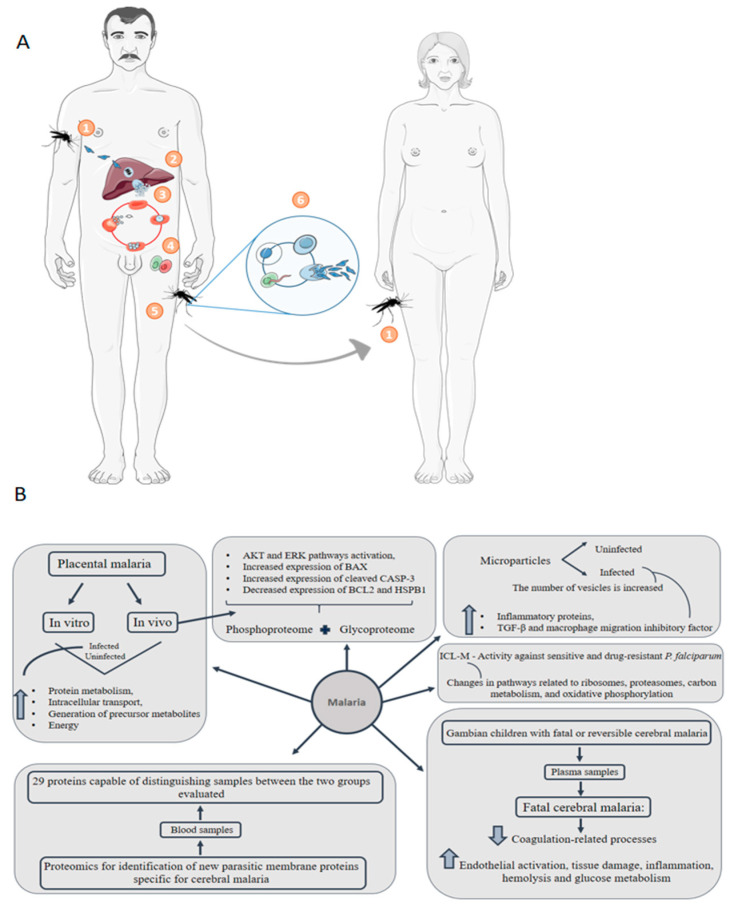Figure 5.
Malaria transmission cycle and representative proteomics-driven studies. (A) (1) Protozoa are transmitted to humans in the form of sporozoites through the bite of the female Anopheles mosquito. (2) Sporozoites reach the bloodstream and reach the liver, where they replicate in hepatocytes and mature in schizonts. Schizonts break and release merozoites. (3) Merozoites are capable of infecting erythrocytes, and initiate a cycle of asexual reproduction. Merozoites released in this step can restart a new cycle of asexual reproduction or they can start a cycle of sexual reproduction. (4) In sexual reproduction, male or female gametocytes are formed from merozoites. (5) Gametocytes can be absorbed by mosquitoes during the bite and start a cycle in the insect’s digestive tract. (6) Fertilization occurs that originates the oocyst, which migrates to the mosquito’s hemocele and releases sporozoites, which migrate to the mosquito’s salivary gland. Thus, when biting a new host, the cycle is restarted (1). (B) Main results of representative proteomic studies applied to malaria disease.

